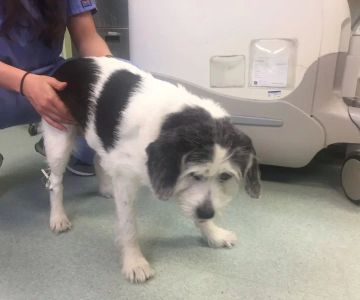- understanding-pet-hyperadrenocorticism
- common-signs-and-symptoms
- diagnostic-approaches
- treatment-options-for-pets
- real-stories-from-pet-owners
- managing-long-term-care
- resources-for-pet-parents
1. Understanding Pet Hyperadrenocorticism
Hyperadrenocorticism, commonly known as Cushing’s disease, is a condition caused by prolonged exposure to high levels of cortisol. In pets, particularly dogs, this disorder can significantly impact quality of life if left untreated. Cortisol plays a vital role in regulating metabolism and stress response, but when overproduced, it leads to a variety of health challenges. Understanding how this condition develops is the first step in recognizing and treating it effectively.
2. Common Signs and Symptoms
One of the most telling signs of pet hyperadrenocorticism is excessive thirst and urination. Owners may notice their dogs needing more frequent bathroom breaks or drinking large amounts of water. Other symptoms include increased appetite, hair loss, thinning skin, and muscle weakness. Because these signs can overlap with other conditions, they are often overlooked until they worsen. Early recognition allows for quicker intervention and better outcomes.
3. Diagnostic Approaches
Veterinarians use a combination of blood tests, urine tests, and imaging studies to confirm hyperadrenocorticism. The ACTH stimulation test and low-dose dexamethasone suppression test are two common diagnostic tools. In some cases, ultrasound is used to check for adrenal or pituitary tumors that drive excessive cortisol production. Accurate diagnosis is crucial, as treatment plans vary depending on the underlying cause.
4. Treatment Options for Pets
Treatment may involve medication, surgery, or a combination of both. Drugs such as trilostane are often prescribed to regulate cortisol production. For pets with adrenal tumors, surgical removal may be recommended. Each approach requires careful monitoring to balance hormone levels without causing adverse effects. Veterinarians typically design treatment plans tailored to the pet’s overall health, age, and lifestyle.
5. Real Stories from Pet Owners
Consider Max, a nine-year-old poodle diagnosed with hyperadrenocorticism after months of unexplained thirst and fatigue. His owner shared that after starting medication, Max regained energy and returned to enjoying his daily walks. Stories like this remind pet parents that timely diagnosis and treatment can restore both comfort and vitality. Online forums are filled with similar accounts, reflecting the shared struggles and victories of caring for pets with this condition.
6. Managing Long-Term Care
Hyperadrenocorticism is often a chronic condition requiring consistent care. Regular veterinary visits, bloodwork, and adjustments in medication help maintain stability. Pet parents may also need to make lifestyle modifications, such as adjusting diet or exercise routines. With careful management, many pets live full, happy lives despite the diagnosis. Commitment to long-term monitoring is the key to successful treatment.
7. Resources for Pet Parents
For those navigating this condition, finding reliable support and products is essential. Platforms like Hidden Brook Veterinary offer resources, expert guidance, and services tailored to the needs of pets with endocrine disorders. Having access to trusted veterinary care ensures that pet parents are not facing this challenge alone and can make informed decisions for their furry companions.











